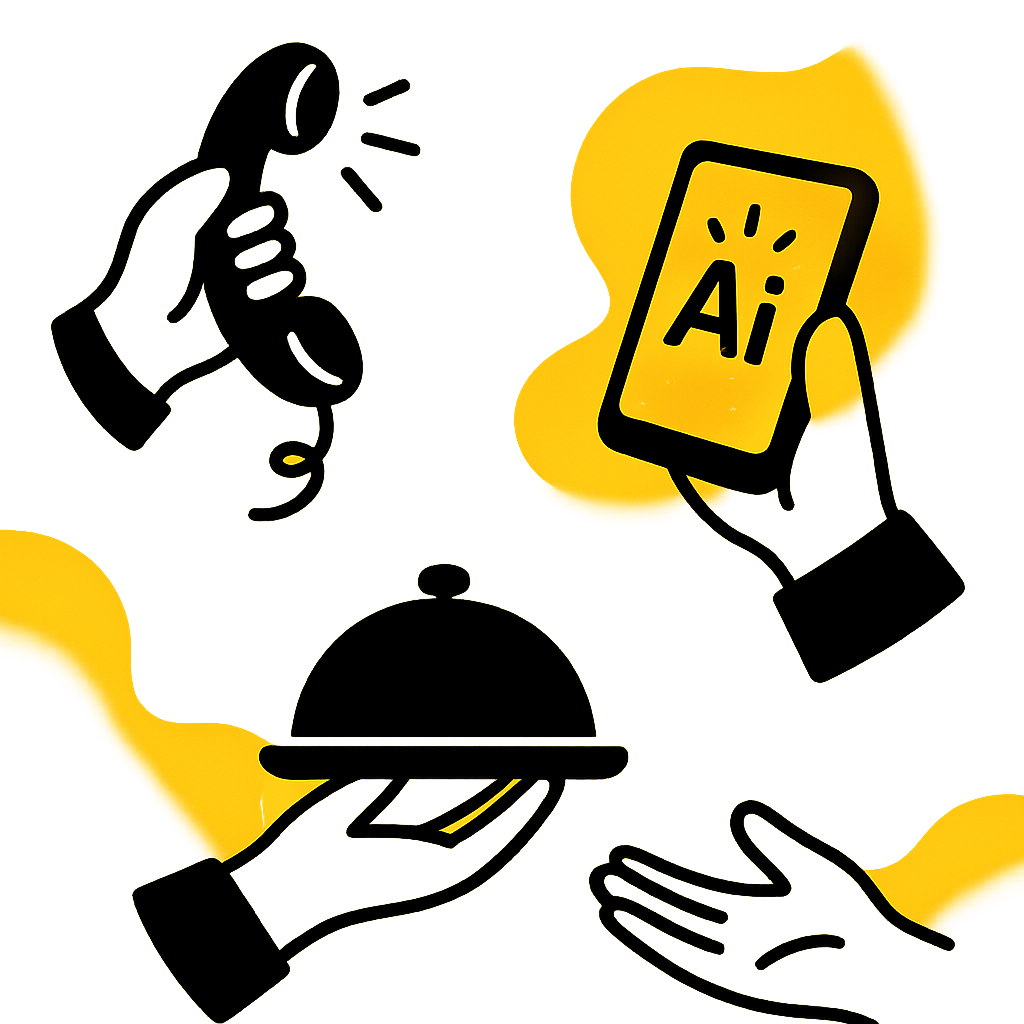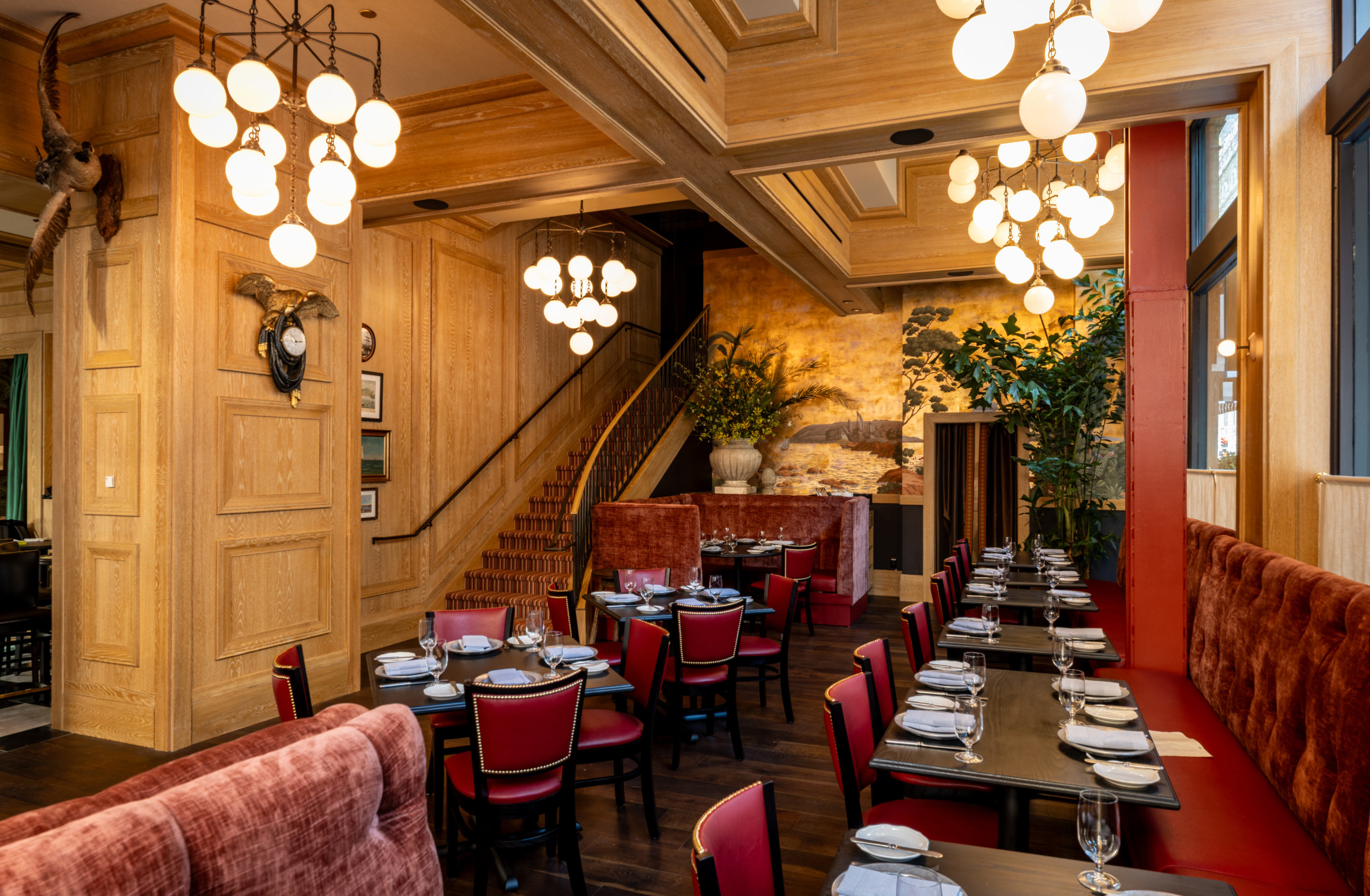
The holiday season is approaching fast, and with it comes the busiest time of year for restaurants. Between Thanksgiving reservations, Christmas party bookings, and New Year's Eve celebrations, your phone will be ringing off the hook. But here's the sobering reality: if you're not prepared, you could be losing thousands of dollars in revenue from missed calls.
According to HospitalityTech, 63% of diners prefer calling restaurants directly (Hostie AI). Meanwhile, industry data shows that restaurants like Maple are experiencing missed-call rates as high as 40% during peak periods. When you combine these statistics with the fact that more than two-thirds (69%) of Americans say they're likely to give up on going to a restaurant if no one answers the phone, the stakes become crystal clear (Hostie AI).
The good news? You don't have to let another holiday season slip through your fingers. With the right strategies and AI-powered tools, you can capture every opportunity that comes your way. This comprehensive guide will walk you through proven peak-season tactics and cutting-edge AI solutions that successful restaurants are deploying to maximize their holiday revenue.
Before diving into solutions, let's understand exactly what's at stake. Research indicates that an estimated 10% of calls to a restaurant go unanswered, leading to about 150 missed calls every month (HungerRush). During peak holiday periods, this number can skyrocket.
Consider this: restaurants average 187 calls daily, yet only 30 percent have systems capable of answering or routing calls effectively (Franchising). When you factor in that 80 percent of callers won't leave messages, and 85 percent won't attempt a callback, every missed call represents lost revenue that's walking straight to your competitors.
The math is particularly brutal during holiday rushes. If your average phone order is $45 and you're missing just 20 calls per day during the peak season (a conservative estimate), that's $900 in daily lost revenue, or $27,000 over a 30-day holiday period. For many restaurants, that's the difference between a profitable quarter and a disappointing one.
One of the quickest wins you can implement before the holiday rush is a robust call-forwarding system. This doesn't mean simply forwarding calls to someone's personal phone - it means creating a structured approach that ensures every call gets answered by someone who can help.
Action Items:
Not all calls require the same level of attention. Some customers are calling for basic information like hours or directions, while others want to make reservations or place large catering orders. AI triage scripting helps categorize and route calls appropriately.
Modern AI systems can handle a surprising variety of tasks. According to recent research, 89% of Americans would be open to using an AI agent for tasks related to interacting with a restaurant (Hostie AI). Specifically, diners are comfortable letting AI handle making reservations (47%), tracking orders or checking wait times (42%), searching for special offers (39%), and placing pickup or delivery orders (38%).
Key Scripting Elements:
SMS has become an essential part of restaurant communication, especially during busy periods when phone lines are jammed. A well-designed SMS system can reduce call volume while improving customer satisfaction.
SMS Strategy Components:
The holidays bring unique challenges and opportunities. Your call handling protocols should reflect the seasonal nature of your business during this period.
Protocol Essentials:
Artificial intelligence is making significant inroads into restaurant front-of-house operations (Hostie AI). Companies like Newo.ai, Slang, RestoHost, Hostie, Revmo, and PolyAI are not just managing bookings; they are engaging in natural conversations, handling multiple languages, and showcasing soft skills previously thought to be exclusive to humans.
The results speak for themselves: AI hosts are generating an additional revenue of $3,000 to $18,000 per month per location, up to 25 times the cost of the AI host itself (Hostie AI). In just a couple of years, there will hardly be any business that hasn't hired an AI employee.
Modern AI phone systems like those offered by various providers can be implemented remarkably quickly. For example, Newo.ai allows restaurants to create their AI host in one click within minutes, and the system can be implemented in under an hour by feeding it the restaurant's menu, signature dishes, and reservation schedules (Newo.ai).
These systems are already in use by early adopters, often without guests realizing it. The technology has advanced to the point where AI can take bookings when the restaurant is closed or during peak hours when human hosts are unavailable, seamlessly integrating with existing operations.
Today's AI restaurant assistants offer impressive capabilities that directly address peak-season challenges:
Enhanced Efficiency and Personalization:
24/7 Availability:
Unlike human staff, AI systems never need breaks, don't call in sick, and can handle multiple calls simultaneously. This is particularly valuable during holiday periods when call volume spikes unpredictably.
Integration Capabilities:
Modern AI phone systems integrate seamlessly with existing reservation and POS systems, ensuring that all information flows smoothly between platforms without creating additional work for staff.
Major restaurant chains are already recognizing the value of AI phone systems. In June 2025, Dine Brands, the parent company of Applebee's and IHOP, announced plans to implement artificial intelligence in their restaurants (Newo.ai). Dine Brands is testing Voice AI Agents to handle customer orders over the phone, aiming to streamline operations and reduce stress on human staff.
This move represents a significant step in the restaurant industry's adoption of AI workers to manage high call volumes and labor shortages. When industry giants like Dine Brands make these investments, it signals that AI phone technology has moved from experimental to essential.
The practical benefits of AI phone systems are already being demonstrated in real restaurants. For instance, Burma Food Group has implemented a virtual concierge system that has boosted their over-the-phone covers by 141% (Hostie AI). This dramatic improvement shows what's possible when restaurants embrace AI technology strategically.
With multiple AI phone solutions available, choosing the right one for your restaurant requires careful consideration of your specific needs and constraints.
Natural Language Processing:
Look for systems that can handle conversational speech patterns, understand context, and respond appropriately to unexpected questions or requests.
Integration Capabilities:
Your AI system should integrate seamlessly with your existing reservation system, POS, and other restaurant management tools. This ensures that information flows smoothly and reduces the risk of double bookings or lost orders.
Customization Options:
Every restaurant has its own personality and specific needs. The best AI systems allow you to customize responses, adjust tone and personality, and configure specific workflows that match your operations.
Multilingual Support:
Depending on your location and customer base, multilingual capabilities can be crucial for maximizing the system's effectiveness.
Analytics and Reporting:
Look for systems that provide detailed analytics on call volume, conversion rates, common customer requests, and other metrics that can help you optimize your operations.
Most modern AI phone systems can be implemented quickly, but planning ahead is still important. Here's a typical timeline:
Week 1-2: Setup and Configuration
Week 3: Staff Training
Week 4: Soft Launch
Week 5+: Full Deployment
AI systems can be programmed to handle dynamic pricing and availability in real-time. During peak periods, this means automatically adjusting prices for premium time slots or offering alternative times when preferred slots are unavailable.
By analyzing historical call patterns and current booking trends, AI systems can help predict when you'll need additional phone coverage, allowing you to schedule staff more effectively.
AI systems can be programmed with sophisticated upselling logic that suggests appetizers, desserts, wine pairings, or special holiday offerings based on the customer's order or reservation details.
Advanced AI systems can learn from each interaction, building profiles of customer preferences that can be used to personalize future interactions and improve satisfaction.
Implementing new call management strategies and AI tools is only valuable if you can measure their impact. Here are the key metrics every restaurant should track:
While AI phone systems offer tremendous benefits, there are common mistakes that can undermine their effectiveness:
While AI can handle many tasks, some situations still require human touch. Make sure your system knows when to escalate calls to human staff, particularly for complex requests or upset customers.
AI systems are only as good as the information they're given. Ensure your system has comprehensive information about your menu, policies, and procedures.
Regularly collect and analyze customer feedback about their experience with your AI system. Use this information to make continuous improvements.
AI should augment your human staff, not replace them entirely. Make sure your team understands how to work with the AI system and when to take over.
The restaurant industry is rapidly evolving, and phone management is no exception. According to industry predictions, 50% of American restaurant operators plan to incorporate automation technologies into their restaurants in the next 2-3 years (Xenia). This trend is driven by the need for smarter and more efficient dining experiences.
AI is gaining popularity among restaurant owners and managers due to its ability to assist in a variety of tasks such as managing orders and tracking diner feedback (QSR Web). The costs of implementing AI solutions in restaurants are decreasing, making it accessible to more restaurants, including those with smaller budgets.
Perhaps most importantly, AI supports restaurant operations by automating phone operations, with 83% of customers admitting to moving on to another restaurant upon getting voicemail more than once (QSR Web).
The holiday season waits for no one, and every day you delay implementing better call management strategies is another day of potential lost revenue. Here's your action plan:
The statistics are clear: phone communication remains the preferred method for most restaurant customers, with 63% of diners preferring to call restaurants directly (Hostie AI). At the same time, missed calls represent a massive revenue opportunity that most restaurants are failing to capture.
The good news is that the technology exists today to solve this problem. AI-powered phone systems have evolved to the point where they can handle complex conversations, integrate seamlessly with existing systems, and provide a level of service that customers appreciate. As Randall Hom, co-founder and CEO of Hostie, puts it: "As a restaurant owner myself, I know how difficult it can be to balance being on the floor during peak service hours while managing inbound calls, texts and emails from potential guests. I'm sure we've lost a ton of business over the years by not being available to answer our guests' questions. That's why we created Hostie, to help operators and managers like us focus on delivering the best hospitality experience to their in person guests, and let technology do the rest" (Hostie AI).
The holiday season is your biggest opportunity of the year. Don't let it slip away because of missed calls. With the right strategies and AI tools in place, you can capture every opportunity, maximize your revenue, and provide the exceptional service your customers expect. The question isn't whether you can afford to implement these solutions - it's whether you can afford not to.
Start planning today, and make this holiday season your most successful yet. Your future self (and your bottom line) will thank you (Hostie AI).
Restaurants lose significant revenue from unanswered calls, with an estimated 10% of calls going unanswered monthly - about 150 missed calls. During peak holiday season, this number can triple, potentially costing thousands in lost reservations and orders. Research shows that 83% of customers will move on to another restaurant after getting voicemail more than once.
Major chains like Applebee's and IHOP are implementing Voice AI Agents to handle customer orders and reduce staff stress. Platforms like Slang AI and ConverseNow offer 24/7 AI-powered phone concierge services that can handle over 2 million conversations monthly, repurposing 83,000+ labor hours while maintaining brand consistency and personalization.
Between 49-62% of customers prefer doing business over the phone according to First Orion research. However, 80% of callers won't leave messages and 85% won't attempt callbacks. This preference, combined with low callback rates, makes answering calls critical for capturing business during busy holiday periods.
AI phone systems provide 24/7 availability, instant response times, and can handle multiple calls simultaneously without putting customers on hold. They can take reservations, process orders, answer menu questions, and direct customers to online ordering platforms, ensuring no revenue opportunity is missed during peak holiday demand.
According to Hostie.ai research, over two-thirds of Americans would ditch restaurants that consistently don't answer the phone. This statistic becomes even more critical during holiday season when customers have limited time and multiple dining options, making phone responsiveness a key competitive advantage.
Restaurants should implement AI phone solutions at least 4-6 weeks before Thanksgiving to allow time for setup, staff training, and system optimization. This timeline ensures the technology is fully integrated and tested before the peak calling period begins, preventing revenue loss during the busiest time of year.
RELATED


